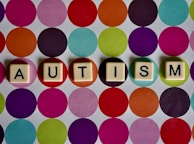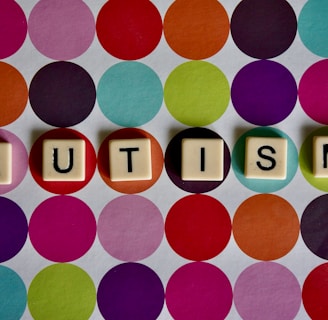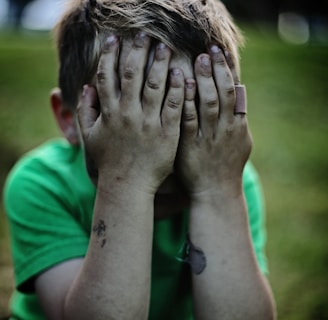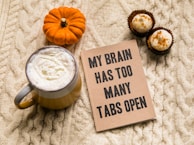

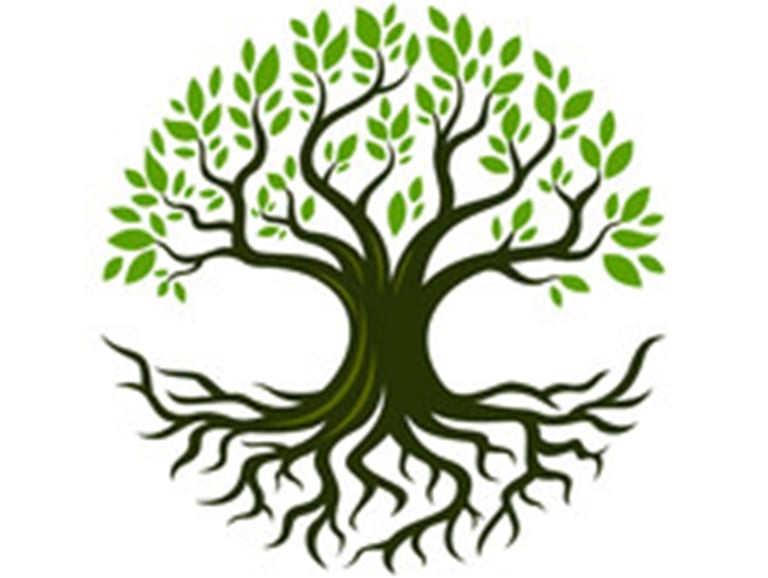

Resilient Roots Therapy
“Through storms, we uncover the roots of our unbreakable spirit.”
Through the tumultuous storms that life throws at us, we have the opportunity to delve deep within ourselves and discover the very essence of our unyielding spirit. It is during these challenging moments that we realize the strength and resilience that lie within our core. Just like a tree withstanding fierce winds, our spirit remains unbreakable, firmly rooted in our values, beliefs, and inner strength. These storms test our limits, pushing us to face our fears, confront our weaknesses, and embrace our vulnerabilities. As we weather these tempests, we grow and evolve, learning valuable lessons and gaining a deeper understanding of ourselves. Our unbreakable spirit serves as a guiding light, empowering us to persevere, overcome adversity, and emerge triumphant. These storms may bend us, but they will never break us, for our spirit is indomitable and unwavering.
Holistic, Person Centred Counselling, supporting people in South Wales and surrounding areas.
Our counselling services in South Wales and the surrounding areas offer a holistic and person-centred approach to support individuals. We understand that each person's journey is unique, and we strive to create a safe and nurturing environment where individuals can explore their thoughts, feelings, and experiences. We are trained to listen attentively, providing a compassionate and non-judgemental space for clients to express themselves. We believe in empowering individuals to discover their strengths, build resilience, and develop healthy coping strategies. Whether you are facing personal challenges, relationship issues, or seeking personal growth, our counselling services are tailored to meet your specific needs. We are dedicated to assisting you on your path towards healing and self-discovery, promoting overall well-being and a sense of fulfilment.
You have the convenience of booking through our store on this website or contacting us through the contact page for any additional information you may require.
About Me
My name is Steve, and I am a person-centred counsellor who possesses a wide range of knowledge and skills to effectively assist you in overcoming your challenges. I believe in tailoring every interaction and therapy session to meet your individual needs. By doing so, I ensure that my guidance and support are personalised and relevant to your specific needs. Whether it is providing a safe and non-judgemental space for you to express your emotions or employing various therapeutic techniques, I am dedicated to helping my you navigate your difficulties. I understand that each person is unique, and their experiences and concerns differ. Therefore, I approach counselling with empathy, respect, and a commitment to fostering personal growth and well-being.
I have extensive experience working with clients who have a wide range of issues. I am dedicated to providing effective support and guidance to all my clients, tailoring my approach to meet their individual needs.


Depression
Depression is a mental health condition characterised by a persistent feeling of sadness or a lack of interest in activities that once brought joy. Unlike typical mood fluctuations, depression lasts for extended periods of time and has a profound impact on various aspects of one's life. Relationships with family, friends, and the community may be profoundly affected by this condition. People experiencing depression often find it difficult to engage in activities they once enjoyed, hindering their ability to connect with loved ones and participate in social events. The impact of depression extends beyond a person's emotional state, permeating all facets of their life, making it vital to seek professional help and support in order to cope with and overcome this challenging condition.


Anxiety Disorders
Everyone can feel anxious sometimes, but people with anxiety disorders often experience fear and worry that is both intense and excessive. These feelings are typically accompanied by physical tension and other behavioural and cognitive symptoms. They are difficult to control, cause significant distress and can last a long time if untreated. Anxiety disorders interfere with daily activities and can impair a person’s family, social and school or working life.
An estimated 4% of the global population currently experience an anxiety disorder (1). In 2019, 301 million people in the world had an anxiety disorder, making anxiety disorders the most common of all mental disorders (1).
Although highly effective treatments for anxiety disorders exist, only about 1 in 4 people in need (27.6%) receive any treatment (2). Barriers to care include lack of awareness that this is a treatable health condition, lack of investment in mental health services, lack of trained health care providers, and social stigma.
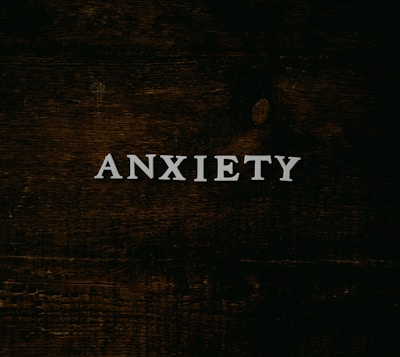

Grief
Grief is the natural emotional response to the loss of someone close, such as a family member or friend. Grief can also occur after a serious illness, a divorce or other significant losses.
Grief often involves intense sadness, and sometimes feelings of shock and numbness, or even denial and anger. For most people, the intensity of grief eases over time and the episodes of grief become less frequent.
Grief is a process or journey that affects everyone differently. It can be exhausting and emotionally draining. This can make it hard to do simple things or even leave the house. Some people cope by becoming more active.
Grief has no set pattern. It is expressed differently across different cultures. Some people like to be expressive and public with their emotions, while others like to keep their feelings private.There are different types of grief and how it can affect individuals. Find support and resources to help navigate through the grieving process.
Grief is a complex emotion that is often associated with the death of a loved one. However, it is important to recognize that grief can also be experienced as a result of other significant losses. The magnitude of the loss directly correlates with the intensity of grief felt. Various situations can trigger feelings of grief, such as the death of a loved one, especially when it involves the loss of an infant, child, or a suicide. Additionally, divorce or separation, the loss of a cherished pet, giving up something of importance, work-related changes like unemployment or retirement, the diagnosis of a terminal illness, and the loss of good health due to illness, accident, or disability can also elicit grief. Other situations, including miscarriage or infertility, having a child with a disability, terminal illness, mental illness, or substance abuse problem, moving away from loved ones, or experiencing an "empty nest" when children leave home, can also lead to profound feelings of grief.
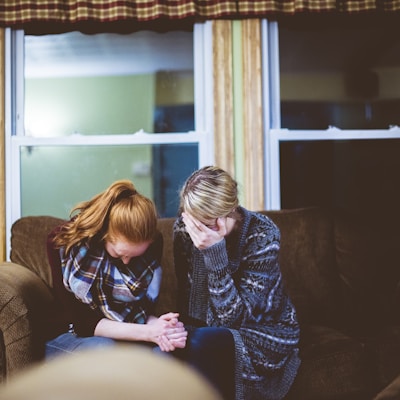

Sleep Disorders
Sleep disorders (or sleep-wake disorders) involve problems with the quality, timing, and amount of sleep, which result in daytime distress and impairment in functioning. Sleep-wake disorders often occur along with medical conditions or other mental health conditions, such as depression, anxiety, or cognitive disorders. There are several different types of sleep-wake disorders, of which insomnia is the most common. Other sleep-wake disorders include obstructive sleep apnea, parasomnias, narcolepsy, and restless leg syndrome.
Sleep difficulties are linked to both physical and emotional problems. Sleep problems can both contribute to or exacerbate mental health conditions and can be a symptom of other mental health conditions.
About one-third of adults report insomnia symptoms and 6-10 percent meet the criteria for insomnia disorder.1
Sleep is a basic human need and is critical to both physical and mental health. There are two types of sleep that generally occur in a pattern of three-to-five cycles per night:
Rapid eye movement (REM) – when most dreaming occurs
Non-REM – has three phases, including the deepest sleep
When you sleep is also important. Your body typically works on a 24-hour cycle (circadian rhythm) that helps you know when to sleep.
How much sleep we need varies depending on age and varies from person to person. According to the National Sleep Foundation most adults need about seven to nine hours of restful sleep each night. The Foundation revised its sleep recommendations in 2015 based on a rigorous review of the scientific literature.
Many of us do not get enough sleep. Nearly 30 percent of adults get less than six hours of sleep each night and only about 30 percent of high school students get at least eight hours of sleep on an average school night.2 An estimated 35 percent of Americans report their sleep quality as “poor” or “only fair.”
Sleep helps your brain function properly. Not getting enough sleep or poor quality sleep has many potential consequences. The most obvious concerns are fatigue and decreased energy, irritability and problems focusing. The ability to make decisions and your mood can also be affected. Sleep problems often coexist with symptoms of depression or anxiety. Sleep problems can exacerbate depression or anxiety, and depression or anxiety can lead to sleep problems.
Lack of sleep and too much sleep are linked to many chronic health problems, such as heart disease and diabetes. Sleep disturbances can also be a warning sign for medical and neurological problems, such as congestive heart failure, osteoarthritis and Parkinson’s disease.


Relationship Issues
Discover how relationships have evolved over time and the common crossroads moments that couples face. From the first year together to the arrival of children, navigate the challenges and strengthen your connection.
For centuries, couples did not have the opportunity to spend several decades together due to shorter lifespans and increased medical risks. However, nowadays, long-term partners face novel challenges. The fundamental reason behind these challenges is the fact that individuals change over time, and their partners must adapt to these changes. Nevertheless, many couples encounter similar crossroads moments that test their connection. These moments include the first year together, the arrival and eventual departure of children, the challenges of old age, and the inevitable tragedies that every person faces. According to relationship turbulence theory, ongoing exposure to polarizing experiences, such as jealousy, goal-blocking, closed communication, avoidance of difficult topics, and taking conflict personally, can cause the deterioration of a couple's connection. Therefore, it is crucial to identify these potential crises early on and openly discuss them to preserve the relationship.


Functional Neurological Disorder FND
Functional Neurological Disorder (FND) is a problem with the functioning of the nervous system and how the brain and body send and receive signals. Physical and/or psychological risk factors can cause functional symptoms which include a variety of physical, sensory and cognitive symptoms that have yet to be explained by a recognised disease. Functional Neurological Disorders are considered to be multifactorial, which means many different risk factors can contribute to the development of the disorder. The symptoms are real and can cause impairment in quality of life that is similar to and in some aspects worse than other neurological conditions. FND occupies a grey area between psychiatry and neurology that historically has failed to gain the interest of researchers and clinicians. The prevalence and potential reversibility of functional illness have peaked new research interests. New scientific findings are influencing how patients are diagnosed, treated, and creating an overall change in attitude toward Functional Neurological Disorder patients.
The most common misconception is that FND patients are in control of some or all of their symptoms. The patient does not consciously produce functional symptoms. Functional Neurological Disorder symptoms are often described as appearing suddenly and progressing rapidly. Symptoms typically wax and wane, including complete remissions and sudden recurrences. It is common for other illness or physical injury to trigger functional symptoms or for patients to develop functional overlay with concurrent illnesses. The co-occurrence of functional symptoms should not impede the care and treatment of the underlying illness.
FND is considered as a rare disease, However, the exact prevalence is unknown, and the mechanisms which cause FND continues to be poorly understood despite its prevalence within neurological clinics. Some researchers claim that functional symptoms are often seen in neurological services making it a common disorder. One report indicates approximately 1/3 of outpatient neurology clinic attendances are patients reporting functional symptoms.
Despite the prevalence of Functional Neurological Disorder, the exact cause of FND is unknown. Many different predisposing factors likely make patients more susceptible to functional symptoms, and at the time of illness onset, these precipitating factors may likely trigger or exacerbate FND symptoms which then cultivate on-going functional symptoms. Perpetuating factors likely begin to create new neuropathways, which could eventually cause changes in the brain. These neuropathways can be retrained with proper treatment and care.
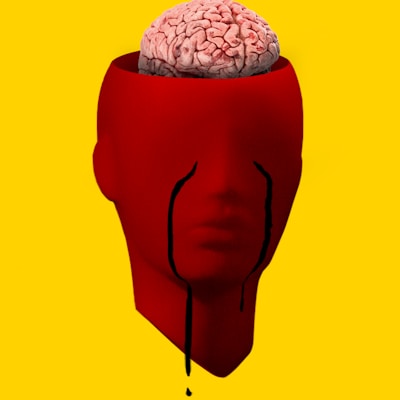
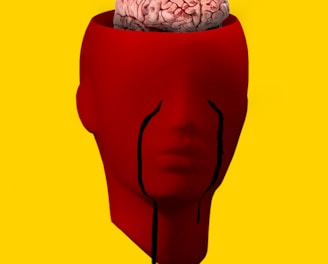
Financial Pressure
Rising prices have created financial pressure for many people in Great Britain, causing them to struggle with payments and fall into debt.
Over the past year, the escalating prices have significantly burdened numerous individuals residing in Great Britain. The mounting financial pressures have resulted in many people finding it arduous to meet their financial obligations or even tumbling into debt. The continuous increase in prices has affected various aspects of people's lives, such as housing, groceries, and utilities, making it increasingly challenging to make ends meet. As a result, individuals are grappling with the dilemma of prioritising essential expenses and making sacrifices in other areas. The strain caused by the rising prices has created a precarious situation for many people in Great Britain, as they face the constant struggle of managing their finances and avoiding falling further into debt.
Half of adults (49%) who reported that they were behind on energy bills between 14 September and 8 January 2023 also reported high levels of anxiety, compared with a third of those who were not behind (33%). They were also more likely than those not behind on bills to report low life satisfaction, happiness, and feelings that things done in life are worthwhile.
Similar trends were found among adults who reported borrowing more money or using more credit than usual, and those who found it difficult to pay their energy bills, rent, or mortgage.




PTSD
Post-Traumatic Stress Disorder (PTSD) is a condition that some people develop after experiencing or witnessing a traumatic life-threatening event or serious injury. Despite it’s prevalence, there has been limited research undertaken in the UK in previous years, although this is slowly improving. PTSD prevalence estimates vary widely, partly due to different study designs, populations, differences regarding trauma exposure, exposure to war and combat events, cultural factors, health care utilisation and methodologies, and recent nationally representative estimates were lacking. Efforts to increase PTSD screening and improve the awareness may not only allow for better detection, but to support those who are affected by it.
It’s estimated that 50-70% of people will experience a trauma at some point in their life. The majority of people exposed to traumatic events experience some short-term distress, but eventually, their trauma fades to a memory – painful, but not destructive.
Around 20% of people who experience a trauma may go on to develop Post Traumatic Stress Disorder (this equates to 10% of a population). This figure can vary widely between studies, populations and communities researched. For example, the most recent study in the UK, looking at prevalence of PTSD after COVID 19 pandemic, estimated the overall pooled estimate of PTSD prevalence to be 17.52% (double and almost triple than previous estimates).
1 in 10 people in the UK are expected to experience PTSD at some point in their lives.
In the UK, that’s around 6,665,000 people who are expected to develop PTSD or C-PTSD at some point in their life, yet it is still an incredibly misunderstood, often misdiagnosed and stigmatised condition.
4 in 100 people in the UK are expected to have PTSD at any given time (this stat doesn’t include C-PTSD), but still equates to 2,612,000 people in the UK.
Women aged 16-24 are most likely to screen positive for PTSD (12.6% of the population in this age range).
Age 55-64 is the only age category where men were more likely to screen positive than women for PTSD.
One in 13 children and young people in the UK will suffer from PTSD at some point during childhood.
It’s estimated there will be as many as 230,000 new PTSD referrals between 2020/21 and 2022/23 in England, which suggests a rise of about 77,000 cases a year on average.
Estimated risk for developing PTSD for those who have experienced the following traumatic events:
Rape (49 percent)
Severe beating or physical assault (31.9 percent)
Other sexual assault (23.7 percent)
Serious accident or injury, for example, car or train accident (16.8 percent)
Shooting or stabbing (15.4 percent)
Sudden, unexpected death of family member or friend (14.3 percent)
Child’s life-threatening illness (10.4 percent)
Witness to killing or serious injury (7.3 percent)
Natural disaster (3.8 percent)


Autism / ASD
What is ASD?
Autism spectrum disorder (ASD) is a neurological and developmental disorder that affects how people interact with others, communicate, learn, and behave. Although autism can be diagnosed at any age, it is described as a “developmental disorder” because symptoms generally appear in the first 2 years of life.
According to the Diagnostic and Statistical Manual of Mental Disorders (DSM-5), a guide created by the American Psychiatric Association that health care providers use to diagnose mental disorders, people with ASD often have:
Difficulty with communication and interaction with other people
Restricted interests and repetitive behaviors
Symptoms that affect their ability to function in school, work, and other areas of life
Autism is known as a “spectrum” disorder because there is wide variation in the type and severity of symptoms people experience.
People of all genders, races, ethnicities, and economic backgrounds can be diagnosed with ASD. Although ASD can be a lifelong disorder, treatments and services can improve a person’s symptoms and daily functioning. The American Academy of Pediatrics recommends that all children receive screening for autism. Caregivers should talk to their child’s health care provider about ASD screening or evaluation.
What are the signs and symptoms of ASD?
The list below gives some examples of common types of behaviors in people diagnosed with ASD. Not all people with ASD will have all behaviors, but most will have several of the behaviors listed below.
Social communication / interaction behaviors may include:
Making little or inconsistent eye contact
Appearing not to look at or listen to people who are talking
Infrequently sharing interest, emotion, or enjoyment of objects or activities (including infrequent pointing at or showing things to others)
Not responding or being slow to respond to one’s name or to other verbal bids for attention
Having difficulties with the back and forth of conversation
Often talking at length about a favorite subject without noticing that others are not interested or without giving others a chance to respond
Displaying facial expressions, movements, and gestures that do not match what is being said
Having an unusual tone of voice that may sound sing-song or flat and robot-like
Having trouble understanding another person’s point of view or being unable to predict or understand other people’s actions
Difficulties adjusting behaviors to social situations
Difficulties sharing in imaginative play or in making friends
Restrictive / repetitive behaviors may include:
Repeating certain behaviors or having unusual behaviors, such as repeating words or phrases (a behavior called echolalia)
Having a lasting intense interest in specific topics, such as numbers, details, or facts
Showing overly focused interests, such as with moving objects or parts of objects
Becoming upset by slight changes in a routine and having difficulty with transitions
Being more sensitive or less sensitive than other people to sensory input, such as light, sound, clothing, or temperature
People with ASD may also experience sleep problems and irritability.
People on the autism spectrum also may have many strengths, including:
Being able to learn things in detail and remember information for long periods of time
Being strong visual and auditory learners
Excelling in math, science, music, or art
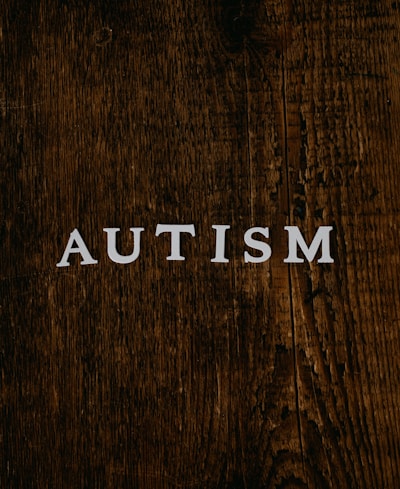
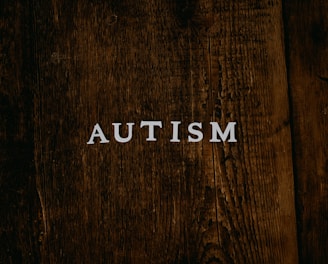
ADHD


Attention deficit hyperactivity disorder (ADHD) is a condition that affects a person's behavior. Individuals with ADHD may exhibit restlessness, difficulty concentrating, and impulsive actions. Symptoms of ADHD are typically identified in early childhood and may become more apparent during transitional periods, such as starting school. While most cases are diagnosed before the age of 12, there are instances where ADHD is recognized later in childhood or even in adulthood. Although the symptoms of ADHD may improve with age, many adults who were diagnosed with the condition during their youth still encounter challenges. Moreover, individuals with ADHD may also experience additional issues, including sleep and anxiety disorders.
Abuse
There are many different ways in which someone can be abused. Assumptions must not be made, but it is enough to suspect abuse to report it.
People may report abuse to you in many ways, for example:
They may tell you
Another person who knows them may tell you; this may be a family member, colleague or member of the public
You may see something such as a bruise or other mark, or notice a change in the person’s behaviour
Here is a list of types of abuse with examples and potential indicators. In all examples there may be other signs as this is not a complete list. Read more about:
Physical abuse
This includes: hitting, slapping, pinching, pushing, misuse of medication and inappropriate holding or restraint. It may also include inappropriate sanctions or punishment and rough handling.
Possible indicators:
History of unexplained falls
Unexplained bruising in well protected or soft parts of the body e.g. ears or buttocks
Multiple bruising in different stages of healing
Unexplained burns – unusual location or type
Unexplained fractures
Unexplained lacerations or abrasions
Slap, kick punch or finger marks
Injury shape similar to an object
Untreated medical problems
Weight loss due to malnutrition or dehydration
Sexual abuse
Examples: rape, indecent exposure, sexual harassment, inappropriate looking or touching, sexual teasing or innuendo, sexual photography, subjection to pornography or witnessing sexual acts, sexual acts or indecent exposure to which the adult has not consented or was pressured into.
Possible indicators:
Sudden change in behaviour
Sudden onset of confusion
Incontinence
Withdrawal
Overt sexual behaviour/language by the adult
Self-inflicted injury
Disturbed sleep pattern/poor concentration
Difficulty in walking
Torn, stained underwear
‘Love bites’
Pain/itching/bleeding or bruising in genital area
Sexually transmitted disease/urinary tract/vaginal infection
Bruising to upper arms and thighs
Frequent vaginal and urinary tract infection
Severe upset or agitation when bathing
Pregnancy in a person who is unable to consent
People find sexual abuse particularly difficult to speak about. Patience and empathy is essential.
Financial abuse
Examples: fraud, theft, taking property without permission, assuming ownership of money or items, scamming (which can be in person, by letter, phone and internet), coercion in relation to an adult’s financial affairs including the writing of or changing a Will, and misuse of benefits. Financial abuse can involve small and large amounts of money or value of property.
Possible indicators:
Sudden inability to pay bills
Sudden debt
Unexplained or unusual patterns of cash withdrawal from an account
Lack of belongings that the adult can clearly afford
Resistance by family to give explanation for unusual financial activity
Extraordinary interest by family in an adult’s assets
Purchase of items that the adult would not usually buy or need
Personal items going missing
The main interest shown by a family member is financial and not the in relation to the care of the adult
Discriminatory abuse
Examples: discriminatory abuse is often on the grounds of age, race, gender or gender identity, culture, religion, sexual orientation or disability.
Other examples of abuse include:
Hate crime (acts of violence or hostility directed at people because of who they are or who someone thinks they are)
‘Mate crime’ (sometimes used to describe a crime committed against an adult by someone who has befriended them)
Derogatory comments
Harassment
Being made to move to a different resource/service based upon an adult’s age
Being denied medical treatment on grounds of age or mental health
Emotional/Psychological abuse
Examples: threats of harm or abandonment, blackmail, deprivation of contact, humiliation and ridicule, blaming, controlling, intimidation, coercion, harassment, isolation, cyber bullying, shouting and swearing, unreasonable support of services or support networks, denial of cultural or religious needs, denial of access to the development of social skills.
Possible indicators:
Change in appetite, weight loss or gain
Low self esteem
Upset and tearfulness
Confusion and agitation
Insomnia
Avoiding eye contact, withdrawal
Isolation, unable to make contact
Distress
Poor hygiene, resulting from restricted access to facilities
Uncharacteristic behaviour
Neglect (and acts of omission)
Examples: ignoring medical, emotional or physical needs; failure to provide access to appropriate health, care and support or educational services; withholding the necessities of life including medication, adequate nutrition and heating.
Possible indicators:
Poor environmental conditions
Inadequate heating and lighting
Poor physical condition of the adult
Malnutrition
Clothing is ill-fitting, unclean or in poor condition
Isolation of the adult
Withdrawal, unhappiness or change in demeanour
Carer’s reluctance to engage with professionals
Carers not allowing contact by professionals with the adult
Self neglect
Examples: self neglect can sometimes be as a result of a person’s choice of lifestyle and covers a wide range of behaviour including neglect to care for one’s personal hygiene, health or surroundings and can include hoarding when it becomes extreme (including animal hoarding). In these circumstances there is no abuser.
Possible indicators:
Living in grossly unsanitary conditions
Suffering from untreated illness or disease/condition
Suffering from over or under eating to the extent that if untreated the adult’s physical or mental health could be impaired
Creating a hazardous situation that would likely cause serious physical harm to the adult or cause substantial loss of assets
Organisational/Institutional abuse
Examples: Neglect, poor practice within an institution such as a care home or hospital and also poor practice in relation to care provided in the adult’s own home. This can be only one incident or a series of incidents which identifies neglect or poor practice resulting from an organisations poor policies, procedures and practice.
It is important not to jump to the wrong conclusions too quickly but the following list may be possible indicators of institutional abuse:
No flexibility in bedtime routine and/or deliberate waking
People left on a commode or toilet for long periods of time
Inappropriate care of possessions, clothing and living area
Lack of personal clothes and belongings
Un-homely or stark living environments
Deprived environmental conditions and lack of stimulation
Inappropriate use of medical procedures such as enemas, catheterisation
Batch care - lack of individual care programmes
Illegal confinement or restrictions
Inappropriate use of power or control
People referred to, or spoken to with disrespect
Inflexible services based on convenience of the provider rather than the person receiving services
Inappropriate physical intervention
Service user removed from the home or establishment, without discussion with other appropriate people or agencies because staff are unable to manage the behaviour
Domestic abuse
The Home Office definition of domestic abuse (2013):
Incident or pattern of incidents of controlling, coercive or threatening behaviour, violence, or abuse by someone who is or has been an intimate partner or family member regardless of gender or sexuality
Includes psychological, physical, sexual, financial, emotional abuse; so called ‘honour’ based violence; Female Genital Mutilation; forced marriage
Includes anyone aged 16 or over
Many people think that domestic abuse is about intimate partners, but it is clear that other family members are included and that much safeguarding work that occurs at home is, in fact is concerned with domestic abuse.
Modern slavery
Modern slavery includes slavery, human trafficking, forced labour and domestic servitude.
Traffickers are those who arrange for the people to move from place to place to do the tasks that they are made to do. It includes moving within the UK and doesn’t have to be from abroad. You may often hear the words ‘harvesters’ or gardeners’ used in relation to the victims of modern slavery being made to grow and look after cannabis farms. Very often the traffickers trick victims into believing that they are arranging for them to have a better life and genuine employment.




Trauma
A traumatic event is one that is unusual and unexpected and that causes deep distress to a person. It could be fire, an accident, a robbery or burglary, an attack, or being a witness to a death. It could be large-scale, such as a major disaster involving many people. It could be a personal event involving you, your friends or family. It is not the size of the traumatic event that affects a person; it is what they think about what happened and what it means to them. This is a very personal thing; people react to traumatic events in different ways. How do people react after a traumatic event? There are three main ways that people can react to trauma:
• Re-experiencing the trauma in your mind
• Avoiding things associated with or related to the trauma
• Feeling more tense, irritable or alert than usual Re-experiencing the trauma in your mind
• Having unwanted pictures or images of the trauma (often called flashbacks) coming into your mind
• Having upsetting dreams about the trauma or about other things that frighten you
• Feeling that the trauma is happening again - strong sensations of re-living it
• Feeling very distressed when you come across situations or feelings that remind you of the trauma
• Experiencing upsetting physical reactions, like a faster heartbeat or dizziness, when you are faced with memories of the trauma or situations that remind you of it
Avoiding things related to the trauma
• Trying to avoid thoughts, feelings and conversations about the trauma
• Avoiding activities, places or people that remind you of the trauma
• Being unable to remember things about the trauma
• Losing interest in life, feeling detached from others or not feeling yourself
• Not feeling you will have a normal future - you may feel as though you are living on borrowed time
Feeling more tense, irritable and alert
• Feeling angry or irritable
• Not being able to concentrate
• Finding it difficult to fall asleep
• Feeling more alert than usual all the time
• Being easily startled
Reactions to trauma can affect people in different ways
• How we feel
• The way the body works
• The way we behave
• The way we think
How we feel (not necessarily all of these)
• Anxious, nervous, worried, frightened
• Feeling something dreadful is going to happen
• Tense, uptight, on edge, unsettled
• Unreal, strange, woozy, detached
• Worrying constantly
• Unable to concentrate
• Dizzy, light-headed
• Panicky
• Depressed, low, at a loss
• Angry
The way the body works (not necessarily all of these)
• Heart races and pounds
• Chest feels tight
• Muscles are tense or stiff
• Feeling tired or exhausted
• Body aches
The way we behave (not necessarily all of these)
• Pace up and down
• Avoid things that remind you of the trauma
• Not able to sit and relax
• Avoid people
• Avoid being alone
The way we think (not necessarily all of these)
• "It was my fault"
• "I’m cracking up"
• "Why did it have to happen?"
• "I can’t see the point any more"7

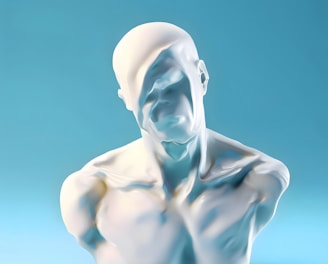
Areas we cover








We are currently based in Blaenau Gwent, located in South Wales. Due to the current circumstances, our service is being conducted through online and telephone appointments. We are actively searching for office space so that we can resume face-to-face sessions. Although our service is currently available nationwide, our main focus is to cater specifically to the people of South Wales. Our goal is to provide a safe, supportive, and comfortable environment for individuals in need of our services.
Update: We do have the ability to hire space for individual face to face sessions.


Resilient Roots Therapy has been life-changing for me. Highly recommended!
Customer Reviews


The therapist at Resilient Roots Therapy helped me overcome my anxiety and find inner peace.














